Just recently, I wrote a post about understanding cats’ body language, and now will explore the subject a bit more. My friend, Carole Baker, sent me an article published in The Guardian and written by Lili Chin. She has written a book called Kitty Language: An Illustrated Guide to Understanding Your Cat.
This post will review the major points in the article. Ms. Chin has described 13 body positions a cat might take, and what they mean. The article in The Guardian contains some excellent drawings. As I could not use those, have come as close as possible to finding photos of each position.
Therefore, here you are. I hope you enjoy this information. Each image and title will reflect the feelings that relate to this particular cat position.
I. RELAXED AND CONTENT
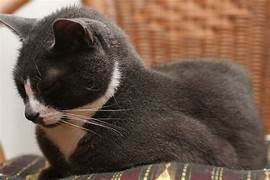
The relaxed cat moves languidly, and has a soft and flexible body. Interesting: If the paw pads are turned in and not touching the ground, the cat is more relaxed.
What You See: Face and body show no signs of tension. Kitty’s movements, if he moves, show as fluid, rather than twitchy or jerky. His weight is balanced.
What Kitty Might Feel: He’s relaxed and content; with him, all is well…he’s just hanging out or taking a short nap.

II. MOVING CONFIDENTLY
What You See: He’ll make a direct approach, with his head at shoulder length or higher. His ears have a forward position, with the tail high and softly curled.
What Kitty Might Feel: He carries his friendship message, and feels confident and comfortable.
III. UNSURE
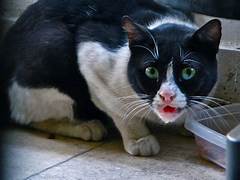
What You See: Your kitty can express uncertainty from either a standing or a seated position. He has stopped moving and carries his head below shoulder height. He crouches slightly, with his limbs tucked in.
What Kitty Might Feel: He’s unsure of the territory. He feels cautious, and must decide whether to approach or retreat.
IV. ANXIOUS
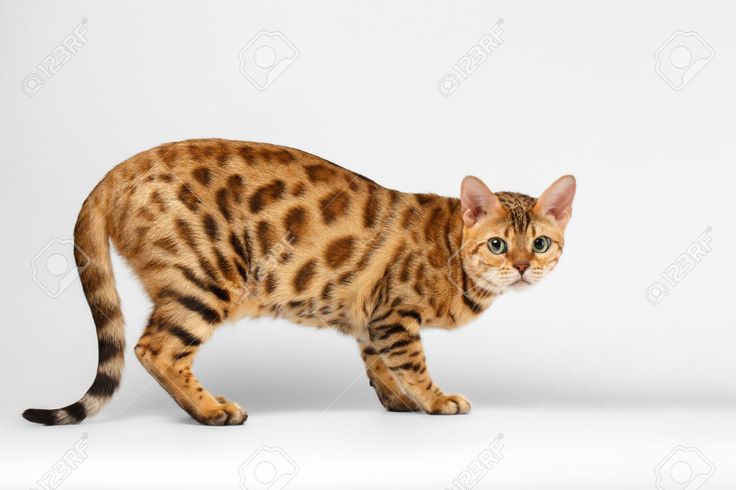
What You See: When anxious, kitty will keep his distance, and crouches close to the ground. He holds his tail either low or tucked down.
What Kitty Might Feel: He feels scared and unsafe. He anticipates danger or discomfort.
V. VERY SCARED

What You See: A kitty with dilated pupils, crouching, with tucked-in head and limbs. Kitty has all four paws flat on the ground.
What Kitty Might Feel: This kitty feels terrified. His message is “Don’t look at me” and “Leave me alone.”
VI. FIXATED, STALKING
What You See: Kitty’s body moves low to the ground, with neck stretching forward. He has a focused stare, and his pupils may change size. He waits and watches, perhaps creeping forward slowly.
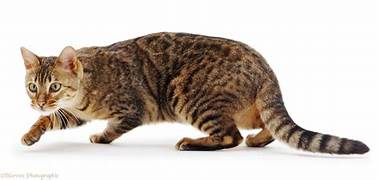
What Kitty Might Feel: The stalking cat remains very focused, calculating distance between him and the prey. He’s thinking, “I’m gonna get you!”
VII. SPRAYING (URINE MARKING)
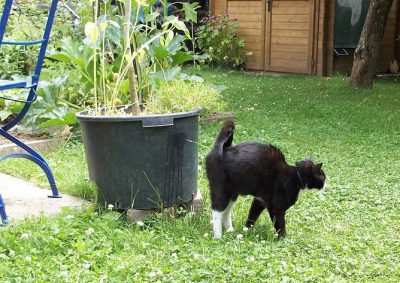
What You See: The tail is high, and sometimes quivering. The cat sprays urine on a vertical surface or on an object higher than ground level.
What Kitty Might Feel: Though it may look like he’s peeing, there are other needs expressed here. This cat feels stress and uncertainty; he needs to reorient to confirm where he is. His action may have its cause in changes in the home he doesn’t understand; he’s trying to make it feel like home. His scent helps. If unneutered, he might send scent messages to attract a mate.
VIII. WHISKERS SPREAD FORWARD
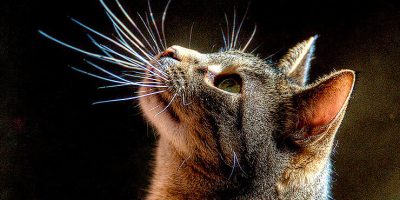
What You See: The whiskers spread out away from the face, as the cat focuses on something. His mouth may appear puffed out.
What Kitty Might Feel: This cat indulges in his curiosity, becoming excited by what he senses. He may also measure the distance to nearby prey or to another object.
IX. WHISKERS SPREAD BACKWARD
When a cat pulls the whiskers back, they do it for protection, or when something comes too close to them and they want to avoid being touched.
What You See: The whiskers become pressed black flat against kitty’s face, and may look bunched together.

What Kitty Might Feel: Kitty feels anxious and overwhelmed, and does not want those whiskers touched.
X. FLATTENED EARS
The ears on this kitty appear folded-down or lowered, or invisible. If the tips point to the side or back like wings, they become known as “aeroplane ears.”
What You See: The ears appear flat, with no openings visible. The ear tips point down or back.
What Kitty Might Feel: The cat with flattened ears feels scared or anxious.
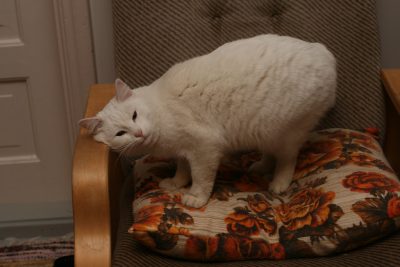
XI. RUBBING AND CLAWING
Cats use this behavior to transfer chemical signals from facial and toe glands.
What You See: Kitty rubs face and body against walls, furniture, and other objects. He uses the claws to knead or scratch at surfaces.
What Kitty Might Feel: The smell of objects and places will reassure kitty that he lives there or has visited there. These marked objects must have the smell refreshed from time to time, as the strength of his scent might face over time. He also shares scent messages in this way with other cats.
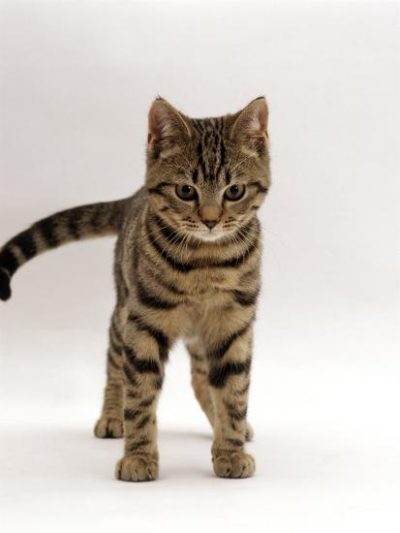
XII. LASHING TAIL
What You See: The tail may swing or lash in a big wagging, slapping, or thumping motion
What Kitty Might Feel: Kitty feels overwhelmed or frustrated. He has trouble relaxing, feeling he has more on his plate than he can handle.
XIII. QUIVERING TAIL
You can observe the quivering tail when your cat greets someone. This one is different from the quivering tail that indicates urine spraying.
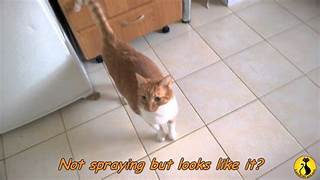
What You See: The cat’s tail stands upright and vibrates from the base (not flickering)
What Kitty Might Feel: Kitty greets a friend, so he feels happiness or giddiness. The prevalent mood is super excitement, because kitty really wants something…like, the attention of this new arrival.
MAY THESE ITEMS SERVE AS CLUES FOR TRANSLATING YOUR KITTY’S CONVERSATION
If you find these explanations helpful, you might wish to order this book. This post represents an extract from “Kitty Language: An Illustrated Guide to Understanding Your Cat,” by Lili Chin.
Reference for this post:
theguardian.com/lifeandstyle/2023/jun/01/kitty-confidential-13-secret-signals-all-cat-owners-need-to-know-from-a-quivering-tail-to-aeroplane-ears

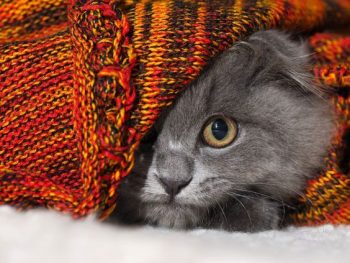
Good job explaining things and the pictures you chose were great. Thanks for sharing this information.
Thanks, Elaine. I think it took me longer to find the pictures than it did to write the article! Glad you approve.